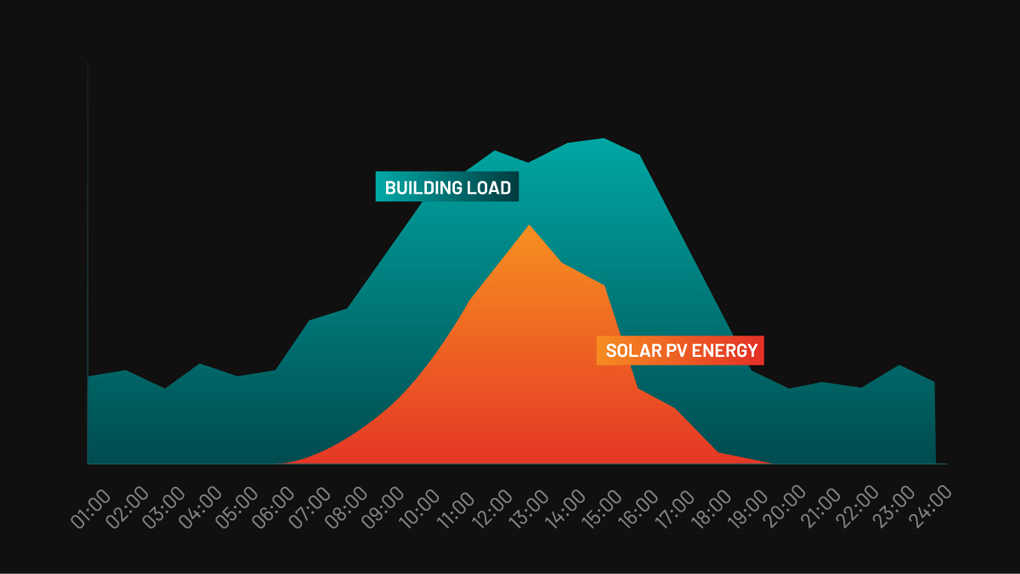ABOUT SELF-CONSUMPTION (SELCO)


HOW SELCO WORKS
When you install a solar PV system onto your own rooftop and fully utilize all the solar energy generated from it, it will be considered as SELCO in which any excess will not be exported to the grid, according to the guidelines of the Electricity Supply Act 1990.
The ministry encourages consumers in the residential, commercial and industrial sector to install solar PV for their self-consumption in order to reduce the overall energy consumption.
Under the Electricity Supply Act 1990, you can refer to the application guidelines for self-consumption:
- Any person who uses, works or operates any solar PV generating facility for self consumption and indirect connection to the licensee distribution network in Peninsular Malaysia and Sabah.
- The relevant Distribution Licensee (DL) whose network is to relate to the self-consumption solar PV generating facility.
ABOUT CORPORATE RENEWABLE ENERGY SUPPLY SCHEME (CRESS)

The Corporate Renewable Energy Supply Scheme (CRESS) is a forward-thinking initiative designed by the Ministry of Energy Transition and Water Transformation (PETRA) under the GREENS MADANI initiative. It enables Green Consumers to buy Renewable Energy (RE) directly from solar farms without installing their own infrastructure. Through long-term Power Purchase Agreements (PPAs), they gain access to clean energy at stable rates, supporting sustainability goals.
Alignment with the Government’s objectives, CRESS will be implemented under the NEDA framework, connecting Renewable Energy Developers (RED), Green Consumers, the Single Buyer (SB), Grid System Operator (GSO) and Grid Owners to foster a greener energy landscape in Malaysia, empowering Green Consumers to reduce their carbon footprint.
HOW CRESS BENEFITS YOUR BUSINESS?
- Direct Access to Clean Energy
– Enjoy the benefits of Renewable Energy (RE) without the high cost of infrastructure. - No Upfront Investment
– Purchase solar power easily from Renewable Energy Developer, while reducing your carbon footprint. - Fixed and Competitive Pricing
– Lock in long-term savings with predictable energy rates charge. - Increase Business ESG Commitment
– Reduce your company’s carbon emissions and contribute to the National Energy Transition Roadmap (NETR) goals. - Avoid Potential Carbon Tax Charges
– Minimise the risk of carbon tax penalties by reducing carbon emission through Renewable Energy adoption.
WHO IS ELIGIBLE FOR CRESS?
- Large Energy Consumers
– This category includes Data Centers, Manufacturing Industries, Heavy Industries, and Commercial Buildings that have significant energy demands. - Multinational Corporations (MNCs)
- Business with Sustainability Commitments.
Under the Corporate Renewable Energy Supply Scheme (CRESS), renewable energy is physically delivered from a Renewable Energy Developer (RED) to the corporate consumer through TNB’s grid under the Third-Party Access (TPA) framework. The corporate buyer pays the RED for the renewable electricity at an agreed rate, while also paying TNB a System Access Charge (SAC) for using the grid to transmit and distribute the energy — similar to a “toll fee.” This structure allows businesses to directly consume green energy while leveraging TNB’s grid reliability, making CRESS a practical path for large and listed companies to achieve their sustainability and decarbonisation goals.
CRESS SYSTEM ACCESS CHARGE (SAC) RATES – BEFORE AND AFTER ADJUSTMENT
| PERIOD | APPLICABILITY | FIRM ENERGY | NON-FIRM ENERGY |
| Before 1 March 2025 | Only for new or additional demand customers (not existing loads) | RM 0.25 / kWh | RM 0.20 / kWh |
| After 1 March 2025 | Now open to existing electricity consumers as well. | RM 0.45 / kWh | RM 0.40 / kWh |
THE TIMELINE
March 2025 – Broaden the pools of corporate participants – open to all existing energy consumers not just new/ additional demands consumers.
September 2024 – Guidelines for CRESS become effective.
July 2024 – Ministry of Energy Transition and Water Transformation (PETRA) announces the launch of CRESS
Info Source: Suruhanjaya Tenaga and Single Buyer
ABOUT LARGE SCALE SOLAR (LSS)
Large Scale Solar or known as LSS is a competitive bidding programme to drive down the Levelized Cost of Energy (LCOE) for the development of large scale solar (LSS) photovoltaic plant and Energy Commission is the implementing agency for this scheme.
HOW LSS WORKS
For individuals who are looking to develop a large-scale solar photovoltaic (PV) plant for connection to electricity networks will need to ensure their capacity is approved by the Energy Commission connected to either the Transmission Network or Distribution Network in Peninsular Malaysia, Sabah or Labuan.
Under Section 50C-The Electricity Supply Act 1990 (Act) [Act 447], the Energy Commission has issued the guidelines on large-scale solar PV plants for connection to electricity networks:
The Guidelines Apply to:
- Any person who has been given the right by the Commission to develop large-scale solar power plant and seeking connection to the transmission and distribution electricity network with a capacity as reflected in the Request for Proposal (RFP) issued by the Commission.
- The relevant licensee, whose network is to be connected with the Large-Scale Solar (LSS) power plant.
- The Single Buyer or relevant distribution licensee who manage the contractual arrangement for the sale and purchase of electricity through the network; and Guidelines on Large Scale Solar Photovoltaic Plant for Connection to Electricity Networks GP/ST/No.1/2016 (Pin. 2020)
- The grid system operator and distribution system operator.
These Guidelines are not applicable to large-scale solar power plants which have been given the right through Sustainable Energy Development Authority (SEDA) Malaysia to develop the plant under FiT scheme.
ABOUT LSS@MENTARI
For those who are looking to bid for LSS4, the deadline has passed. However, if you are participating in the LSS program, here are the key principles of the LSS@MEnTARI framework by the Energy Commission:
- Local company which is a company incorporated in Malaysia under the Companies Act 2016 or under any corresponding previous written law, whereby such company:
A. If not listed on Bursa Malaysia Berhad, shall have 100% Malaysian equity shareholding; and
B. If listed on Bursa Malaysia Berhad, shall have at least 75% Malaysian equity shareholding. - The plant capacity range for LSS power plant is divided into two capacity packages are as follows:
A. Package P1: 10.00MWa.c. to less than 30.00MWa.c.
B. Package P2: 30.00MWa.c. to 50.00MWa.c. - The connection to the electricity network, (either the Transmission Network or Distribution Network), shall be based on technical criteria and evaluation through a comprehensive power system study.
- The Power Purchase Agreement (PPA) shall be based on take and pay, energy only under Build, Own and Operate (BOO) concession.
- A Bidder can submit up to three (3) LSS Plants for consideration, however, the aggregated Export Capacity of all the LSS Plants shall not be more than 50MWa.c.
- The PPA duration is 21 years with fixed energy prices throughout.
- The offers by the Shortlisted Bidders shall be based on the optimum output, final yield and specific yield of the proposed LSS power plant in accordance with the design and technology used.
- The LSS developer shall declare the plant’s energy production for 21 years. In the PPA, the LSS developer is entitled to be paid the Energy Rate up to the LSS power plant’s Maximum Annual Allowable Quantity (MAAQ).
Source: Suruhanjaya Tenaga-Energy Commission
ABOUT NET ENERGY METERING (NEM) FULLY
ALLOCATED

Net Energy Metering (NEM) is a scheme announced by the Ministry of Energy and Natural Resources (KeTSA) that allows electricity consumers with solar photovoltaic (PV) systems to generate their own renewable energy and export excess electricity to the national grid.
Since its introduction in 2016, NEM has evolved through several phases — from NEM 1.0 (displaced cost offset) to NEM 2.0 (1:1 energy offset) and NEM 3.0 (expanded access via NEM Rakyat, GoMEn, and NOVA programmes), collectively driving the green movement across residential, government, and industrial sectors under the National Energy Transition Roadmap (NETR).
This scheme is regulated by the Energy Commission (EC), with the Sustainable Energy Development Authority (SEDA) Malaysia acting as the implementing agency.
THE NEM EVOLUTION TIMELINE AND HOW IT WORKS
NEM allows electricity consumers to benefit from solar PV energy. The solar energy generated will be consumed by the building first, and any excess energy will be exported to the national grid to offset the TNB electricity bill.
| VERSION | PERIOD | PROGRAMME HIGHLIGHTS | OFFSET RATE | QUOTA ALLOCATION |
| NEM 1.0 | 2016 – 2018 | First introduction of NEM | 1:1 offset based on displaced cost | 500 MW |
| NEM 2.0 | 2019 – 2020 | Revamped the NEM 1.0 mechanism and the offset rate | 1:1 offset at same as the tariff rate | 500 MW |
| NEM 3.0 | 2021 – 30 June 2025 |
Introduced NEM Rakyat (Domestic), NEM GoMEn (Government), NEM NOVA (C&I) |
|
2,500 MW |
WHO IS ELIGIBLE TO APPLY FOR NEM?
You can apply for this scheme if you are:
- Eligible Consumer: One who is a consumer of the Distribution Licensee who has not been blacklisted in its system for reasons such as non-payment of electricity bills, committing an offence, and other related issues.
- Registered consumer of the Distribution Licensee in Peninsular Malaysia only.
- Not a delinquent consumer, meaning one who has not paid their bills or has a pending meter tampering case.
- Subscribers of the following tariff categories:
– Industrial
– Commercial (including government-owned structures)
– Residential / Domestic
– Agricultural - Electricity shall only be generated from solar photovoltaic (PV) systems. Other forms of renewable energy such as biogas, biomass, or micro-hydro may be allowed by the Commission on a case-by-case basis.
ABOUT CORPORATE GREEN POWER PROGRAMME (CGPP) FULLY
ALLOCATED

The Corporate Green Power Programme (CGPP) in Malaysia is an initiative that enables Corporate Consumers (CCs) to virtually purchase solar energy from Solar Power Producers (SPPs) through a Virtual Power Purchase Agreement (VPPA). It was introduced by the Energy Commission (EC) and Single Buyer as part of the government’s National Energy Transition Roadmap (NETR) to accelerate corporate access to renewable energy.
Launched in May 2023, CGPP offers a total quota of 800 MW for Peninsular Malaysia. Plus Xnergy has successfully secured a total of 40MW (5%) under the approved 32 applicants, marking a significant milestone in expanding corporate participation in green energy.
HOW CGPP WORKS?
Under CGPP, Corporate Consumers committed to achieving Environmental, Social, and Governance (ESG) goals, but who are unable to install solar systems on-site or whose existing installations cannot meet total energy demand to reduce the company carbon emission goal, they can still have the chance to access renewable energy under this programme.
Corporate Consumers purchase electricity virtually through Electricity Utility Companies (via Single Buyer), by signing a Virtual Power Purchase Agreement with a Solar Power Producer in accordance with the New Enhanced Dispatch Arrangement (NEDA) guidelines. This mechanism allows corporate buyers to receive Renewable Energy Certificates (RECs) representing the green attributes of the solar power generated, which can then be used to offset ESG Scope 2 emissions and support ESG reporting.
In the context of the CGPP in Malaysia, the “Contract for Difference” (CfD) is a mechanism of the Corporate Green Power Agreement (CGPA), which is a form of virtual power purchase agreement provides price stability for both the Solar Power Producer and the Corporate Consumer. Corporate Consumers will purchase the energy produced by the Solar Power Producer based on an agreed price or price structure. Meanwhile, Electricity Utility Company pays the exported electricity supply system based on the Actual System Marginal Price (SMP) to Solar Power Producer.
If the SMP is higher than the CGPA price, the Solar Power Producer will pay the Corporate Consumer the difference between the actual System Marginal Price (SMP) and the CGPA price and vice versa.
To find out more details about the calculation and the registration process, you may refer to Single Buyer website to read further: https://www.singlebuyer.com.my/nedacgpp.php
Source: Single Buyer
